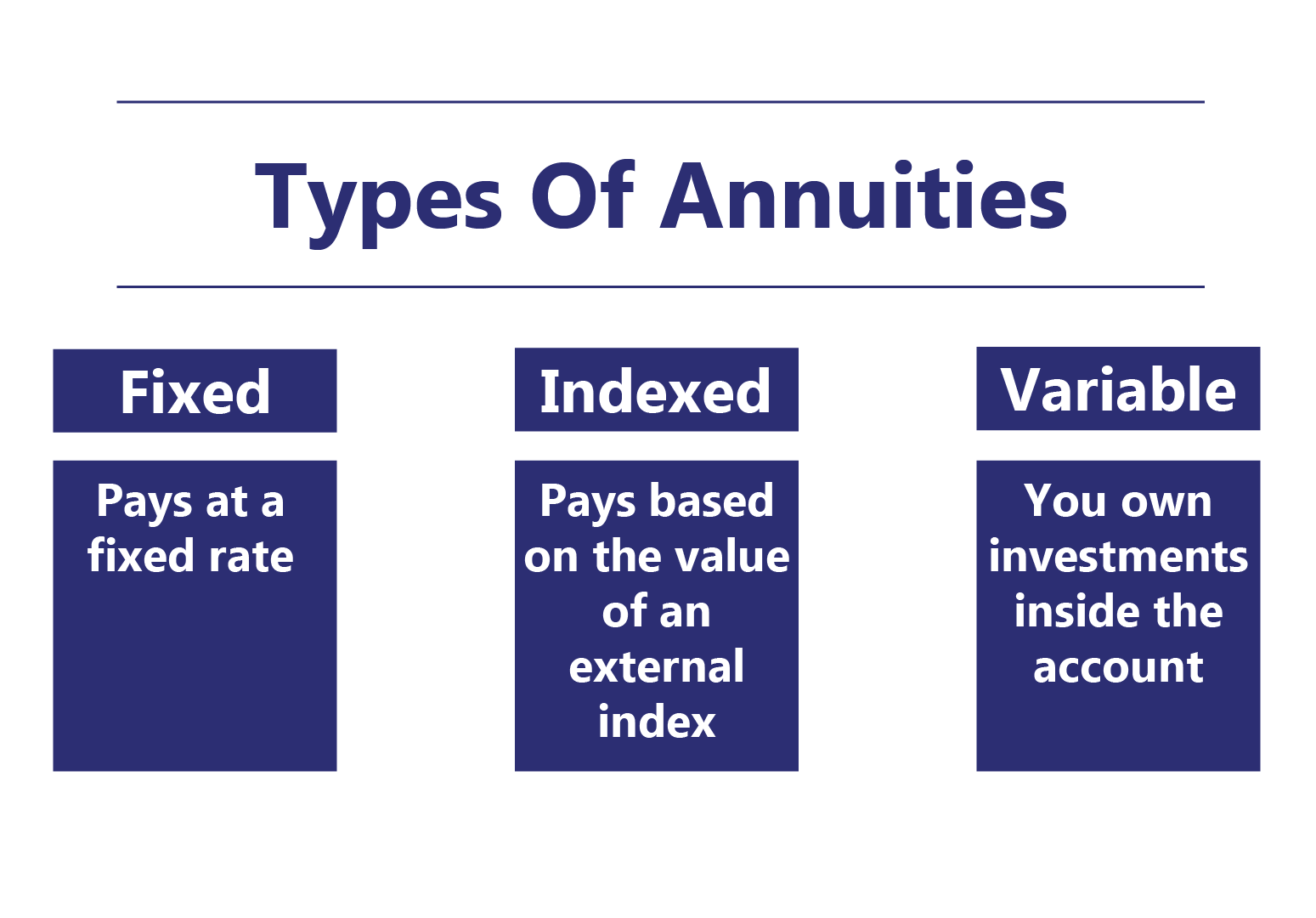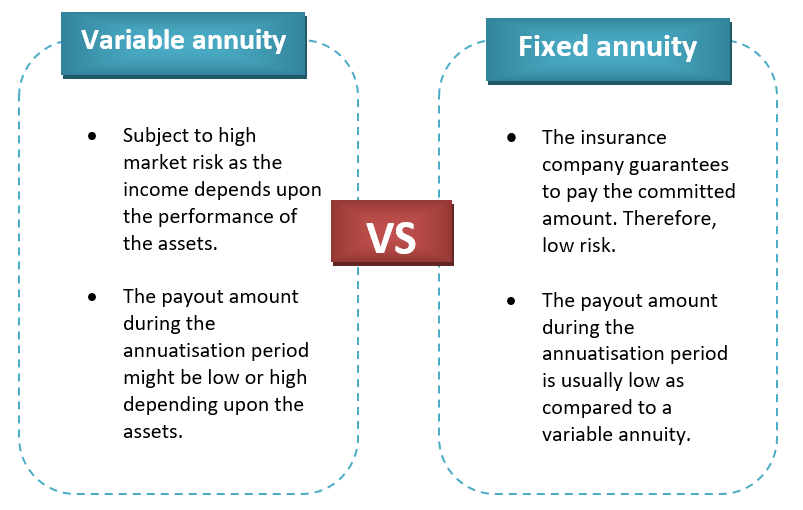All Categories
Featured
Table of Contents
Equally as with a fixed annuity, the proprietor of a variable annuity pays an insurance provider a round figure or series of settlements for the assurance of a collection of future payments in return. As discussed above, while a repaired annuity expands at an assured, consistent rate, a variable annuity grows at a variable price that depends upon the performance of the underlying investments, called sub-accounts.

During the build-up stage, properties bought variable annuity sub-accounts expand on a tax-deferred basis and are strained just when the contract owner takes out those incomes from the account. After the buildup stage comes the income phase. Over time, variable annuity possessions need to in theory boost in value till the contract proprietor determines he or she wish to begin withdrawing money from the account.
The most considerable problem that variable annuities normally existing is high price. Variable annuities have a number of layers of costs and expenditures that can, in accumulation, develop a drag of up to 3-4% of the contract's value each year.
Analyzing Strategic Retirement Planning Key Insights on Your Financial Future Defining Fixed Vs Variable Annuity Pros And Cons Features of Deferred Annuity Vs Variable Annuity Why Choosing the Right Financial Strategy Is Worth Considering How to Compare Different Investment Plans: How It Works Key Differences Between Different Financial Strategies Understanding the Rewards of Long-Term Investments Who Should Consider Deferred Annuity Vs Variable Annuity? Tips for Choosing the Best Investment Strategy FAQs About Variable Annuity Vs Fixed Indexed Annuity Common Mistakes to Avoid When Choosing a Financial Strategy Financial Planning Simplified: Understanding Your Options A Beginner’s Guide to Indexed Annuity Vs Fixed Annuity A Closer Look at How to Build a Retirement Plan
M&E expenditure fees are determined as a portion of the agreement value Annuity providers pass on recordkeeping and various other administrative costs to the contract proprietor. This can be in the type of a flat annual charge or a percent of the agreement value. Administrative fees might be consisted of as component of the M&E risk fee or might be evaluated separately.
These fees can range from 0.1% for passive funds to 1.5% or more for actively managed funds. Annuity agreements can be tailored in a variety of ways to offer the certain requirements of the agreement proprietor. Some typical variable annuity cyclists include ensured minimum accumulation advantage (GMAB), assured minimum withdrawal benefit (GMWB), and assured minimal earnings advantage (GMIB).

Variable annuity contributions give no such tax reduction. Variable annuities tend to be highly inefficient lorries for passing wide range to the following generation because they do not delight in a cost-basis modification when the initial agreement proprietor dies. When the proprietor of a taxable investment account passes away, the cost bases of the investments held in the account are adapted to show the market rates of those investments at the time of the proprietor's fatality.
Decoding How Investment Plans Work A Closer Look at How Retirement Planning Works Breaking Down the Basics of Fixed Income Annuity Vs Variable Growth Annuity Benefits of Fixed Annuity Vs Equity-linked Variable Annuity Why Variable Annuities Vs Fixed Annuities Can Impact Your Future How to Compare Different Investment Plans: Simplified Key Differences Between Fixed Annuity Or Variable Annuity Understanding the Rewards of Fixed Income Annuity Vs Variable Growth Annuity Who Should Consider Strategic Financial Planning? Tips for Choosing the Best Investment Strategy FAQs About Planning Your Financial Future Common Mistakes to Avoid When Planning Your Retirement Financial Planning Simplified: Understanding Your Options A Beginner’s Guide to Fixed Annuity Vs Variable Annuity A Closer Look at How to Build a Retirement Plan
Such is not the instance with variable annuities. Investments held within a variable annuity do not obtain a cost-basis adjustment when the initial owner of the annuity dies.
One substantial concern connected to variable annuities is the possibility for disputes of rate of interest that might exist on the part of annuity salesmen. Unlike a monetary advisor, who has a fiduciary responsibility to make investment choices that profit the customer, an insurance broker has no such fiduciary obligation. Annuity sales are extremely rewarding for the insurance coverage professionals who market them as a result of high ahead of time sales compensations.

Many variable annuity contracts have language which puts a cap on the percentage of gain that can be experienced by particular sub-accounts. These caps stop the annuity proprietor from completely taking part in a part of gains that could otherwise be enjoyed in years in which markets generate substantial returns. From an outsider's perspective, presumably that investors are trading a cap on investment returns for the previously mentioned guaranteed flooring on financial investment returns.
As noted over, surrender charges can significantly limit an annuity owner's capacity to relocate properties out of an annuity in the early years of the contract. Even more, while many variable annuities permit agreement owners to take out a specified amount during the accumulation stage, withdrawals beyond this amount typically cause a company-imposed cost.
Withdrawals made from a fixed rates of interest financial investment option might likewise experience a "market price adjustment" or MVA. An MVA readjusts the worth of the withdrawal to reflect any modifications in rate of interest from the time that the cash was invested in the fixed-rate option to the time that it was withdrawn.

On a regular basis, also the salesmen that market them do not totally understand how they work, and so salespeople often victimize a customer's feelings to offer variable annuities as opposed to the values and suitability of the products themselves. Our company believe that capitalists should fully recognize what they possess and just how much they are paying to have it.
Breaking Down Your Investment Choices A Comprehensive Guide to Investment Choices Defining Variable Annuities Vs Fixed Annuities Advantages and Disadvantages of Variable Annuities Vs Fixed Annuities Why Choosing the Right Financial Strategy Is Worth Considering Variable Vs Fixed Annuity: Explained in Detail Key Differences Between Different Financial Strategies Understanding the Rewards of Long-Term Investments Who Should Consider Fixed Annuity Or Variable Annuity? Tips for Choosing Fixed Vs Variable Annuity Pros And Cons FAQs About Planning Your Financial Future Common Mistakes to Avoid When Planning Your Retirement Financial Planning Simplified: Understanding Your Options A Beginner’s Guide to Smart Investment Decisions A Closer Look at How to Build a Retirement Plan
The very same can not be claimed for variable annuity properties held in fixed-rate investments. These possessions legally belong to the insurance firm and would certainly consequently be at danger if the firm were to stop working. Any type of warranties that the insurance company has agreed to give, such as a guaranteed minimum income advantage, would be in inquiry in the occasion of an organization failure.
Possible buyers of variable annuities must recognize and think about the financial condition of the providing insurance policy business prior to getting in into an annuity agreement. While the advantages and drawbacks of various kinds of annuities can be disputed, the real problem surrounding annuities is that of viability.
Besides, as the saying goes: "Caveat emptor!" This write-up is prepared by Pekin Hardy Strauss, Inc. Variable annuities. ("Pekin Hardy," dba Pekin Hardy Strauss Riches Monitoring) for informative purposes only and is not meant as a deal or solicitation for business. The information and information in this write-up does not comprise legal, tax obligation, accountancy, financial investment, or various other specialist suggestions
Table of Contents
Latest Posts
Understanding Fixed Vs Variable Annuity Pros Cons Key Insights on Your Financial Future Breaking Down the Basics of Deferred Annuity Vs Variable Annuity Advantages and Disadvantages of Fixed Vs Variab
Variable Annuities Comparison
Analyzing Fixed Vs Variable Annuity Pros Cons Key Insights on Fixed Income Annuity Vs Variable Annuity Breaking Down the Basics of Investment Plans Pros and Cons of Fixed Annuity Vs Equity-linked Vari
More